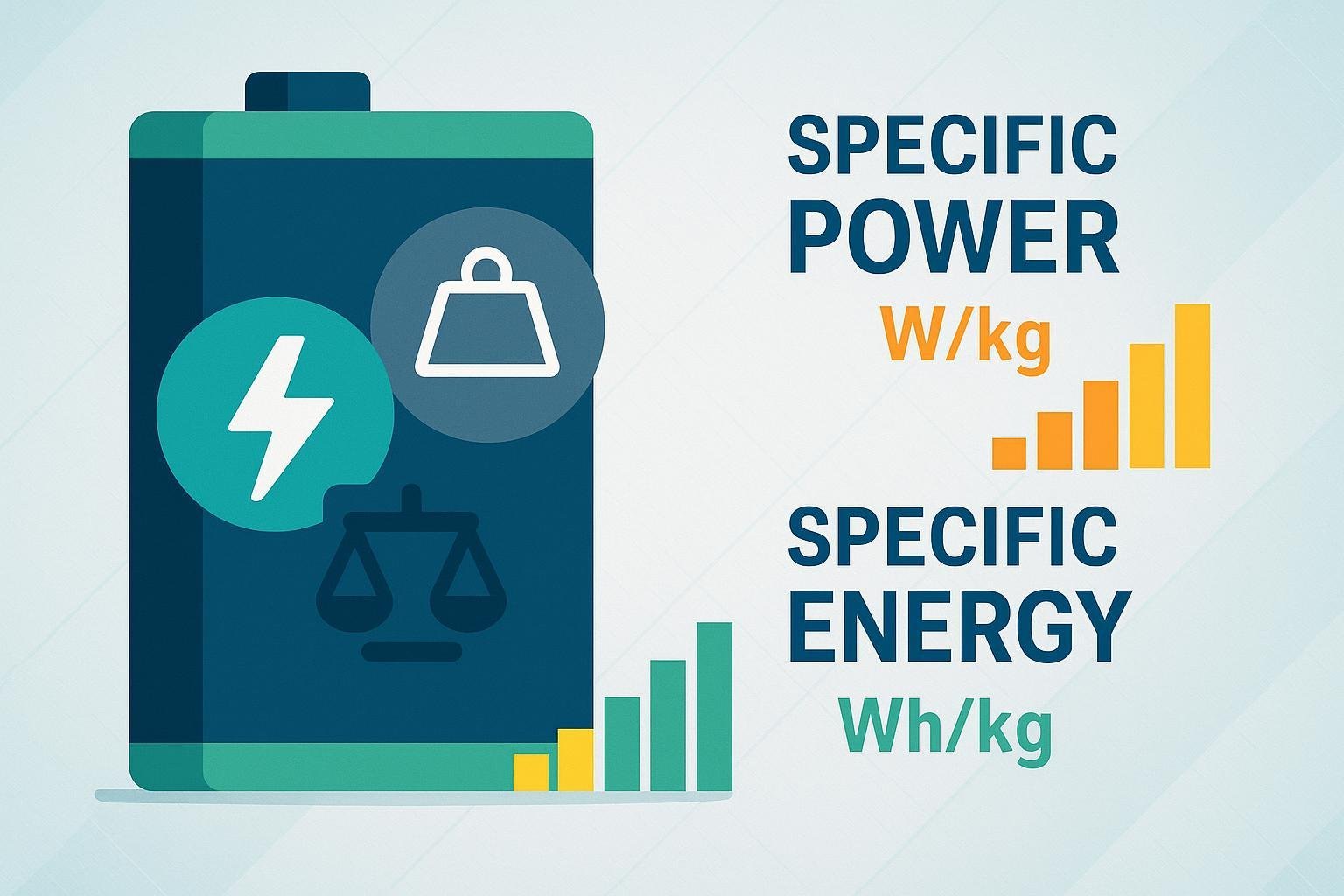
Определение в одном предложении
Specific Power is the maximum rate at which a battery can deliver energy per unit mass, measured in watts per kilogram (W/kg).
Подробное объяснение
In the world of lithium batteries, Specific Power defines how quickly a battery can provide its stored energy to an application. The higher the specific power, the more rapidly a device—be it an electric vehicle (EV), drone, or power tool—can accelerate, thrust, or operate under high demand.
Formally, it is calculated using the equation:
Specific Power (W/kg) = Maximum Power Output (W) / Mass of Battery (kg)
There are two key types:
- Peak Specific Power: The highest short-duration output before safety or thermal limits are reached.
- Continuous Specific Power: The sustained output over a longer period, typically limited by heat and battery degradation considerations.
Typical lithium-ion chemistries (such as NMC, LFP, NCA) provide specific power in the range of 250–2,000 W/kg for cells, depending on design and intended use.[DOE Source]
Worked Example
If a lithium battery can deliver a peak output of 1,000 watts and has a mass of 0.5 kg:
- Specific Power = 1,000 W / 0.5 kg = 2,000 W/kg
Key Technical Components
- Химический состав аккумулятора: Materials (NMC, LFP, NCA) crucially affect resistance and heat handling, influencing both peak and continuous specific power values.
- Cell Design: Larger electrode surface area, advanced heat management, and optimized electrolyte promote higher specific power.
- Internal Resistance: Lower internal resistance enables higher current (more power) without overheating.
- Measurement Standards: Commonly referenced standards from IEC, IEEE, or DOE guide specific power testing, though details are often proprietary.
Comparison Table: Related Metrics
| Metric | Unit | Определение | Typical Value* |
|---|---|---|---|
| Specific Power | W/kg | Max power output per kg of battery | 250–2,000 W/kg (Li-ion) |
| Удельная энергия | Wh/kg | Total stored energy per kg of battery | 100–265 Wh/kg (Li-ion) |
| Power Density | W/L | Max power output per liter (volume) | 500–1,500 W/L (Li-ion) |
| Плотность энергии | Wh/L | Total energy stored per liter | 250–730 Wh/L (Li-ion) |
*Typical values vary by chemistry and manufacturer. [Университет аккумуляторов]
Key Distinction:
- Specific Power measures “how fast” energy is delivered (performance, acceleration).
- Удельная энергия measures “how long” energy lasts (endurance, runtime).
Применение в реальном мире
- Электромобили (EV): High specific power delivers strong acceleration and supports rapid regenerative braking. It’s crucial for sporty driving and performance EVs.
- Drones & UAVs: High specific power batteries provide fast thrust for take-off and maneuvers, essential for professional aerial work.
- Power Tools: Sustained high specific power allows for demanding operations like cutting or drilling with minimal weight.
- Industrial & Medical Equipment: Devices requiring bursts of power (e.g., pumps, actuators) benefit from batteries optimized for specific power.
Смежные понятия
- Удельная энергия: Measures total capacity, not delivery rate.
- Power Density: Focuses on per-volume delivery, important for space-constrained devices.
- Плотность энергии: Total energy by volume.
Trade-off Note: Battery cells with extremely high specific power often offer lower specific energy due to design compromises in electrode thickness and heat management. Choosing an optimal battery always involves balancing these metrics based on application needs.

